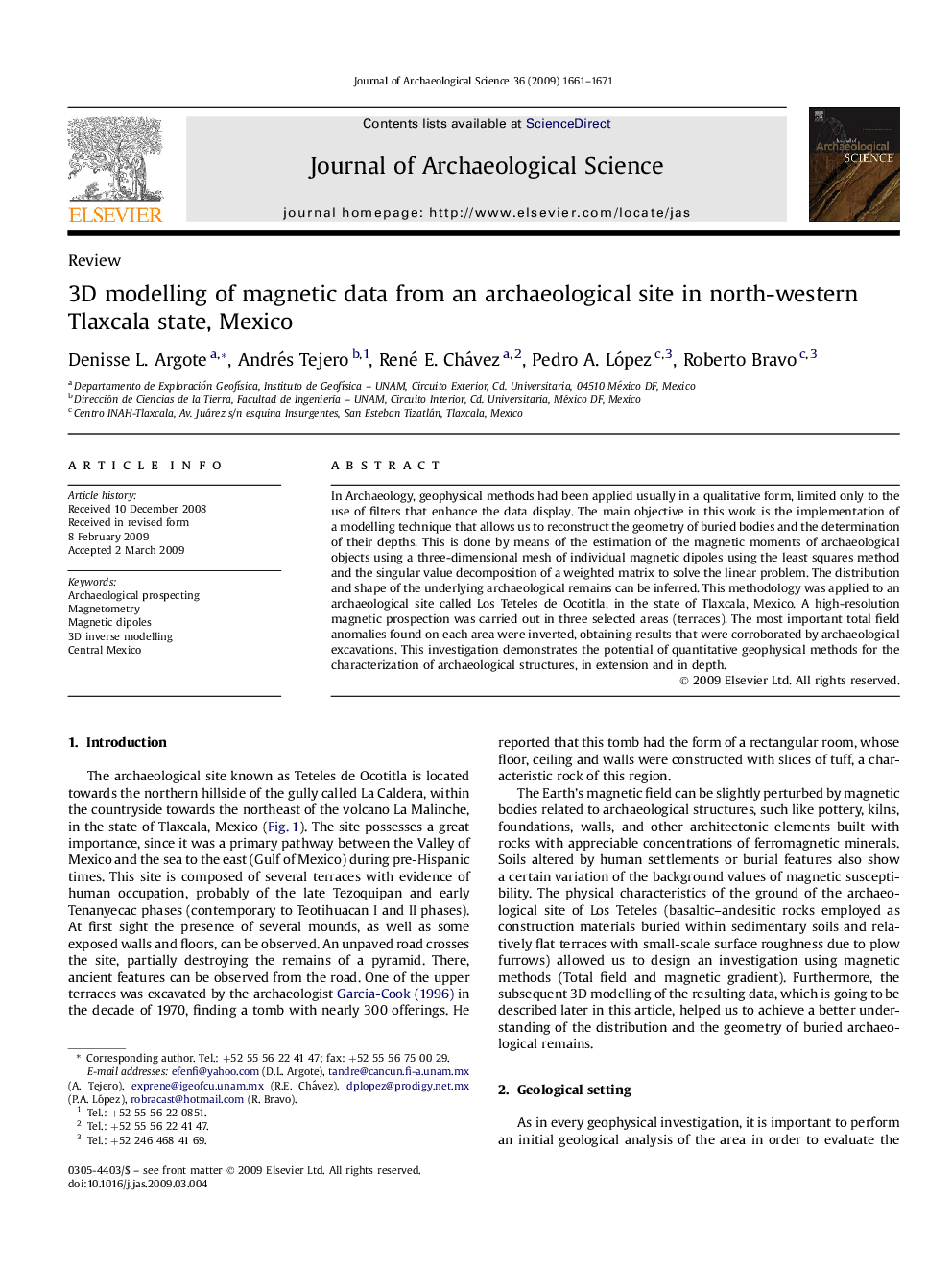| Article ID | Journal | Published Year | Pages | File Type |
|---|---|---|---|---|
| 1036982 | Journal of Archaeological Science | 2009 | 11 Pages |
In Archaeology, geophysical methods had been applied usually in a qualitative form, limited only to the use of filters that enhance the data display. The main objective in this work is the implementation of a modelling technique that allows us to reconstruct the geometry of buried bodies and the determination of their depths. This is done by means of the estimation of the magnetic moments of archaeological objects using a three-dimensional mesh of individual magnetic dipoles using the least squares method and the singular value decomposition of a weighted matrix to solve the linear problem. The distribution and shape of the underlying archaeological remains can be inferred. This methodology was applied to an archaeological site called Los Teteles de Ocotitla, in the state of Tlaxcala, Mexico. A high-resolution magnetic prospection was carried out in three selected areas (terraces). The most important total field anomalies found on each area were inverted, obtaining results that were corroborated by archaeological excavations. This investigation demonstrates the potential of quantitative geophysical methods for the characterization of archaeological structures, in extension and in depth.
